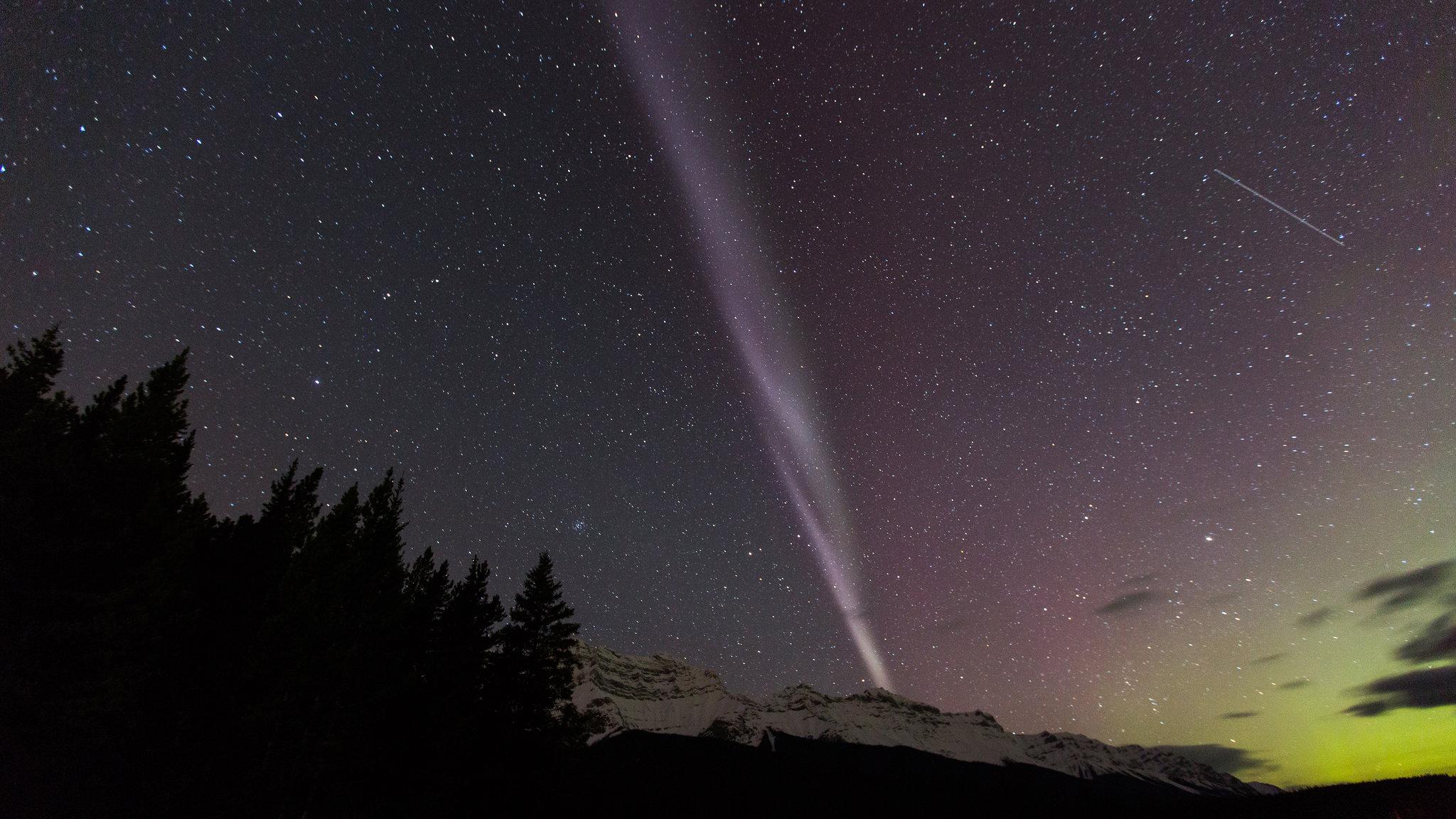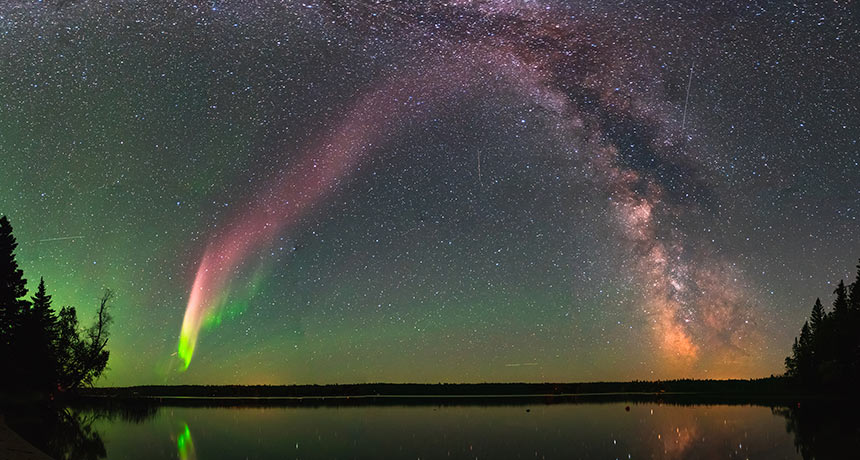For years, sky gazers in Canada have been training their camera lenses on a wispy strand of purple light running across the country from east to west, sometimes bound by neon green fingers that appear to wave. It looks like a piece of the aurora borealis, or the Northern Lights: blushes of pink or green that illuminate the night sky at high latitudes, caused by solar particles interacting with the earth’s magnetic field.
New work helps to classify the cause and properties of “Steve,” an aurora-like phenomenon documented by citizen scientists as it streaked across the sky in western Canada. Steve is short for Strong Thermal Emission Velocity Enhancement, a backronym given by aurora watchers.
Researchers first became aware of STEVE after members of a Facebook group called the Alberta Aurora Chasers (which refers to the province in western Canada) began posting photos of unusual purplish-greenish streaks oriented nearly vertically in the sky. Scientist collaborators coordinated with the aurora chasers to combine the dates and times of the phenomenon’s appearance with data from the European Space Agency’s Swarm satellites, which precisely measure variation in Earth’s magnetic field, to work out what conditions caused the phenomenon.

According to the new work, the distinctive ribbon of purple light with green accents — which can occur at lower latitudes than normal auroras do — gives scientists a glimpse into the interactions of Earth’s magnetic field and upper atmosphere.
“It’s exciting because this might be a kind of aurora that more people can see than any other kind, because when it shows up, it shows up over more populated areas that are further to the south,” said Elizabeth MacDonald, a researcher at NASA’s Goddard Space Flight Center in Maryland and lead author of the new work. And scientifically, “it’s an aspect related to auroras that’s further south than we ever had recognized … It tells us that the processes creating the aurora are penetrating all the way into the inner magnetosphere, and so that’s a new aspect of it.”
“There’s an electric field in those regions that points poleward and a magnetic field that points downward, and those two together create this strong drift to the west,” MacDonald said. The flow in Earth’s ionosphere pulls charged solar particles westward, where they hit neutral particles along the way and heat them up, producing upward-reaching streaks of light moving west.

